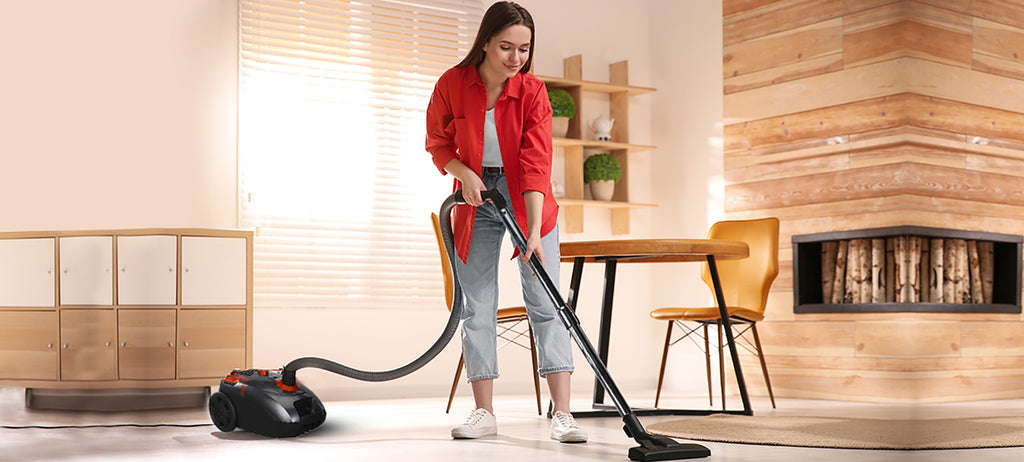A vacuum cleaner is an electrically powered device that cleans various surfaces by sucking and eliminating dust and tiny particles. The cleared dust mites and substances are dumped in a dust bag or cyclone within the cleaner.
They are mostly used to clean filth and dust from upholstery, carpets, velveteen furniture, hardwood, and other types of flooring, including laminated floors. They are also employed in the cleaning of automobiles and stairwells. Vacuum cleaners are classified according to their intended usage. For instance, handheld vacuums can work for spaces where your upright vacuum cannot; for liquid spills, you can use vacuum cleaners, wet and dry, etc.
Because of their relative complexity in handling compared to traditional methods of cleaning, they require careful and regular maintenance to perform effectively for a long time.
What You Need to Know About Maintaining Your Vacuum Cleaner?
Like any other duty, Vacuuming your house is probably not your idea of joy. But this is possibly the one housekeeping duty you won't want to skip because regular vacuuming provides numerous benefits for you and your family.
Knowing how to use your vacuum cleaner correctly will help it last longer, increase worker productivity, and make vacuuming safer. A well-maintained vacuum cleaner would remain working for 20 years. Follow the advice given below to keep yours in great condition.
Restore the vacuum belt.
The majority of vacuum cleaner belts loosen and wear out over time. As a result, the roller brush spins slowly or not at all. Therefore, it is recommended to replace the belt once a year. To replace the vacuum belt begin by accessing the brushroll area. Remove the brush roller and separate the old belt. Next, on the motor shaft, install the new vacuum belt. Make sure that it’s correctly positioned. Finally, reassemble the vacuum, and you’re good to go.
Clean your vacuum cleaner's roller brush.
Hair and threads bind around the roller and bristles, stretching the belts and reducing agitation. They can also get into the bearings, leading them to lock and, in rare cases, melt the nozzle housing, damaging the vacuum cleaner permanently. Cleaning the roller brush regularly can help prevent such mishaps.
To clean the roller brush, firstly ensure your safety by unplugging the vacuum. Lay the vacuum down to expose the underside and then take the roller brush out. Use your fingers to pull off the stuck hair and larger debris. Run it under water to ensure that it’s thoroughly cleaned. Once it has dried completely, put the roller brush back into its original position, and you’re done!
Change the vacuum bag if it is full.
If your vacuum does not have a "full indication," keep track of its effectiveness as you go. A vacuum bag should be replaced when 70-80 percent filled.
To change the vacuum bag, begin by unplugging the device and then take out the top cover. You will realise whether the bag needs to be changed by looking at how much dust it has collected. Next, simply take out the old bag and install a new one.
Keep an eye on the performance of your vacuum cleaner.
Stop using the vacuum cleaner if it's not picking up, stinking, smoking, or spitting something out. Investigate the problem. We frequently observe burnt-out vacuum motors resulting from machines being driven long when they are clogged. Clogs obstruct airflow and cause vacuum motors to overheat.
Regular servicing helps.
Start spring cleaning by having your vacuum cleaner fully serviced. You can do this at home. Examine the ducting and bristle length, update belts and filters, and test it.
If you’re looking to buy a new vacuum cleaner, check out the AGARO website for a range of the latest models at highly competitive prices.
Frequently Asked Questions
Q: How to clean vacuum brush?
A: To clean a vacuum brush, first, remove it from the vacuum if possible. Cut away any tangled hair or fibers with scissors being careful not to cut the bristles. Then, wash the brush with warm soapy water, rinse well, and let it dry completely before reattaching it to the vacuum.
Q: How to fix vacuum belt?
A: To fix a vacuum belt, first, unplug the vacuum and open the compartment that houses the belt. Remove the broken belt and clean the area. Place the new belt over the motor shaft and the brush roll. Ensure it's snug but not too tight, and then rotate the brush roll to align the belt. Replace the cover and secure it back in place.
Q: How often should a vacuum be serviced?
A: A vacuum should generally be serviced once a year to ensure it's operating at peak efficiency. However, if you notice a loss of suction, strange noises, or smells, it’s a good idea to have it checked by a professional sooner. Regular user maintenance, such as emptying the bag or canister and cleaning filters, should be done more frequently, according to the manufacturer's instructions.
TAGS:

